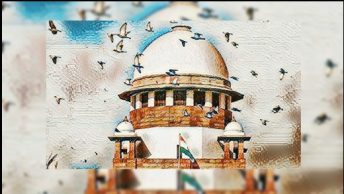(As part of our blog round-table book discussion, this is the third of the substantive responses to Julia Stephen’s Governing Islam: Law, Empire and Secularism in South Asia, by Professor Jhuma Sen.)
Governing Islam: Law, Empire, and Secularism by Julia Stephens masterfully weaves together a tale of a complex relationship between law, empire and Islam in South Asia and complicates the established history of secularism in the subcontinent. A growing body of work has indicated that the religion-secular distinction is historically volatile, and that the meanings of ‘religion’ or ‘secular’, far from being unproblematically self-evident, are critical sites where meanings are generated, negotiated and altered as products of historical contestations. Governing Islam though inhabiting that intellectual space offers so much more. In the introductory chapter, Stephens explains the purported goal of her project, that is to show, how ‘Indian’s engagements with and subversions of law co-existed in dynamic tension with a profoundly transformative, and deeply coercive, colonial legal project.’ Stephens explains this complex story by telling a ‘braided narrative’ of how colonial secular governance operated through a series of binaries where religion was pitted against reason, community against the state, family against economy and how this dominant logic of colonial secular governance was continuously disrupted and subverted by secularism’s ‘other’, the subjects who occupied the margins, ‘the colonized, Muslims, and women’ in the everyday legal encounters which made the religious/secular distinction an ambiguous one.
Law’s place in the colonial enterprise has been critically examined by a number of scholars. The centrality of the use of law in the ‘civilizing mission’ of colonial control, conceptualized as the “gifts we gave them” (Fitzpatrick 1989) has been the ‘cutting edge’ of colonialism (Chanock 1985). The colonial impulse to ‘modernise’ or ‘secularise’ the legal system and its unintended consequences have been the subject of some serious scholarship as well. The language of ‘liberalism’, to borrow from Uday Mehta (1999), was intricately tied to the imperial urge to dominate the world. While introduction of colonial law promoted cultural transformations of the colonized subjects, it also, at the same time established the boundaries of these transformations and provided opportunities for the colonized subjects for resisting its control. The Charter Act of 1833 in an attempt to remedy the ‘unsatisfactory state of law’ where the colonial administrators had particular difficulty in ascertaining what the law was and where it was available, provided for the appointment of a law commission to enquire into the existing system of administration of justice and nature of all laws prevalent in the country. The Indian Law Commission after being established, clarified that personal laws would be limited to the private sphere of family. Stephen’s first chapter (Forging Secular Legal Governance) prods this moment of anxiety and charts the journey of colonial maneuvers, legal acrobats and administrative logic that would come together in the marginalisation of Muslim law to prepare the groundwork of ‘secular legal governance’. Feminist legal scholars and historians (Parashar, Randeria, Sarkar) have elsewhere pointed out how the idea of personal laws was introduced by the colonial administrators and that it in fact mirrored the European categorization of personal and territorial laws. Colonial administrative logic ‘created a small island of laws’ that were designated as religious personal laws (Parashar) but the exact contours of what constituted personal matters and what did not, changed from one regulation to another. This chapter, drawing from a rich literature on the history of colonial myth making of ‘personal law’ and tempered with an immensely enjoyable archival trail demonstrates, how for the British colonizing mission to succeed, the category of ‘personal law’ was invented to refer to laws that applied only to members of specific religious communities and only in narrow familial matters and ritual practices. This mapping is further explored in the next few chapters of the book where Stephens closely observes how the religious/secular divide was adjudicated in everyday practices. The court here becomes one of the sites where colonial law’s slippage into the fluidity of everyday practice occurs.
Stephens’ excavation of the historical narrative in Shumsoonnissa’s case offers an important lens to understand the trappings of ‘secular legal governance’ and its failings when it tries to divide the messy world of the colonized subjects into neat binaries of the domestic, where the quarrel of a feuding couple is to be adjudicated, and the economic, where a dispute over ‘finances’ between the said couple was to be decided. In 1856, Shumsoonnisa, a wealthy heiress, fled and sued her husband Buzloor Ruheem, an indebted landowner, for recovery of her property, which she suspected her husband had stolen. Her husband responded by filing a suit for restitution of conjugal rights, which allowed the courts to compel the spouse to resume cohabiting with his or her partner. Incidentally, the idea of restitution of conjugal rights itself was imported from English ecclesiastical law and transplanted onto the Indian Penal Code without much modification. Through a careful reading of judicial and legal archives, Stephens demonstrates while the Privy Council offered Shumsoonnisa ‘protection from her husband’s financial thievery in the property suit, they threatened her with the prospect of returning to the same thief’s home in the restitution suit.’ The colonial court and the imaginaries of secular law here emerge as the handmaiden of a patriarchal order marginalizing Indian women’s position in her family as well as market.
On perhaps not an unrelated note, Shumsoonnissa’s case, and her subsequent relegation to an economically vulnerable Purdahnashin woman, in the registers of the patriarchal colonial judiciary also throw open questions of colonial constructions of women litigants in the courts. Barring a few notable exceptions, case laws in colonial courts, especially those that map day to day uneasy encounters between colonial women litigants, ‘semi-autonomous judges’ (to borrow from Sharafi) and their mediators, have received surprisingly scant attention from feminist historians as well as legal scholars. The performance of a court hearing in a ritualized setting where everyday events and relationships are named, defined, decisions are rendered and penalties imposed, introduce new meanings to those subjects as well as others and courts thus become critical sites of cultural production (Merry 1991; Yngvesson 1988). Who was colonial woman litigant before the courts and what brought her there? How did she negotiate her rights and how did the court accommodate her? Did she become a rights bearing subject in the eyes of the court or a marker of several intersecting identities of her colonial subjectivity, race, caste, class, religion, sex and community that determined her fate? There is another book waiting to get out from the pages of this book.
Finally, the colonial state is not just an agent of transformation. In Governing Islam, it is also a form that evolves over time. Ultimately, the legacy of colonial secular governance with all its frailties and contradictions, is in how it shaped the relationship between religion, state, community, family and gender in the postcolonial nation state. The concluding chapters of Governing Islam, in some way represent what has been referred to as ‘colonialism continually in the making’ (Clancy-Smith 2011) which marks the transition of the colonial to the postcolonial as a volatile succession of inventions, contradictions, negotiations and maneuvers. While Stephens does not delve into the colonial continuities of the varied forms of secular legal governance employed by the postcolonial nation state, her lens is useful to historicize and understand the debates on Muslim ‘personal law’ reforms in modern India. For one, the contestations between liberal discourse of modernity, or modern discourse of liberty have been central to postcolonial lawmaking. The debates surrounding the Hindu Code Bills show how modernity was sought to be constructed by the nascent nation state, which frowned upon customary practices perceived as ‘primitive’. At the same time Hindu law was constructed as ‘modern’ because it was projected to be able to reorient itself according to the expectations of a modern nation state. However, as many feminist legal scholars have now demonstrated, this idealized construction of Hindu law as modern and egalitarian was far from true. Now, there is a rich scholarship on the outcome of this postcolonial lawmaking process where, to borrow from Srimati Basu, “the current body of Hindu law has been interpellated as progressive and egalitarian, depicted as the ‘secular’ default alternative” even when the law remained deeply unequal for women, while the laws of other communities, “particularly Muslim law, have become coded as alien, primitive, and fundamentally unfair towards women”. Successive governments, while ensuring that power and privilege of the community elites are maintained, claimed that the Muslim community was the one ‘unwilling to modernise’ (Basu, Agnes).
But what happens when community elites, Muslim women’s networks and the state come in direct confrontation with each other in the juridical arena, at a time when the ruling elite is a Hindu majoritarian party? Recently, the Indian Supreme Court in Shayara Bano v Union of India, a case that challenged the constitutional validity of instantaneous talaq, in a 3:2 majority invalidated instantaneous talaq by holding it to be un-Islamic and unconstitutional. Shayara Bano saw the participation of Muslim women’s networks (Bharatiya Muslim Mahila Andolan, Bebaak Collective, All India Muslim Women’s Personal Law Board), the self-styled community leaders (All India Muslim Personal Law Board), the Indian state to name only a few parties. While instantaneous talaq was unapproved by the Prophet himself, it gained legitimacy in some Sunni schools, mostly Hanafi, and gained legal sanction in British courts which considered Muslim marriage to be loose unions liable to be dissolved by a casual utterance of talaq. In a 1932 Privy Council decision in Rashid Ahmed, it was held, albeit incorrectly that instantaneous talaq was bad in theology but good in law. This later gained some currency in the Indian courts which interpreted this to mean that only what was good in theology could pass the test of being good (and hence valid) in the eyes of law. Instantaneous talaq, several High court decisions and later a Supreme Court decision in Shamim Ara claimed did not pass the test of being good in law. But what separated Shamim Ara from Shayara Bano, was not the validity of triple talaq alone, in theology or in law, but the larger questions on the relationship between personal law and the Constitution itself, a question which the Indian judiciary had steadfastly refused to answer following a 1951 decision of the Bombay High Court in Narasu Appa Mali. In Narasu, the court held that Article 13 (1) of the Indian constitution contemplated only statutory laws and that personal laws cannot be considered statutory laws and hence were outside the scope of Article 13. The ‘ghost of Narasu’, as a leading member of the bar put it, was not exorcised in Shayara Bano. A later attempt to exorcise the ghost was made in Sabarimala, but the scheme of events that followed Sabarimala perhaps establishes that ghosts of colonialism, past and present are ridiculously difficult to exorcise.








[…] “Law and Other Things,” a blog about India’s laws and legal system, will host a book discussion on Julia Stephen’s Governing Islam: Law, Empire and Secularism in South Asia (2018). The book explores the colonial underpinnings of contemporary struggles between Islam and secularism in India, Pakistan, and Bangladesh. Here is Professor Rohit De‘s introduction to the book discussion: […]
Thank you for your sharing. I am worried that I lack creative ideas. It is your article that makes me full of hope. Thank you. But, I have a question, can you help me?